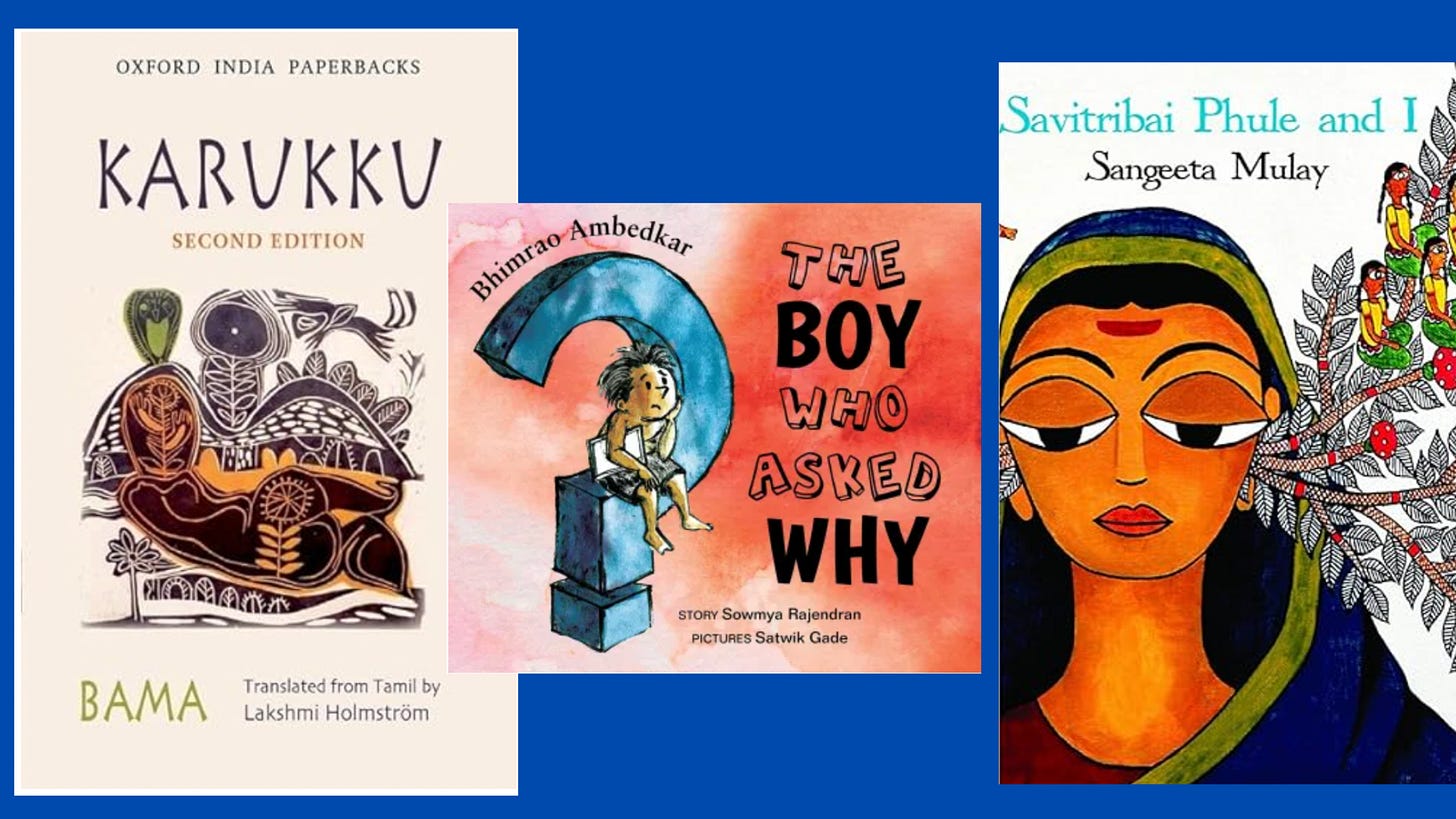April Prompt: a story that portrays the childhood of a Dalit writer
When I was in fifth grade, a new student had moved from a village in Karnataka to my school in Sharjah. We were deskmates for a term, and once she casually mentioned, “If we were back in my village, Amma would not have invited you home.” I was surprised that her mother did not like children. Only much later that year, after piecing together the many things she said, I realised the real reason for being unwelcome was that I wasn’t Brahmin.
Of course, like most Indian children, I did hear things vaguely around caste, from movies and in conversations floating around me. Despite studying in a CBSE school in the UAE, my idea of diversity was limited to nationalities, language and states till high school. On the other hand, my Sunday School history curriculum went to great lengths to convince us that Syrian Christians, like my family, traced their roots to a set of Brahmin families in Kerala who were converted by St. Thomas over 2000 years ago. Even as a teen, I found the wording in the textbook suspicious for many reasons. But growing up in a community that has historically had access to education and land, I had the privilege of not thinking about it.
I moved to India for university, but it was only after a few years in the development sector that I realised how critical it was for me to understand caste. Of course, no amount of reading will substitute for lived experiences. However, reading has helped me become more mindful of word choices and conscious about how I present myself to the world. As always, I also turn to children’s books when trying to build my understanding of anything complex. So here are three of my recommendations:
Karukku by Bama (Oxford University Press, 2000): Translated from Tamil by Lakshmi Holmstrom, this might be familiar to those who studied from NCERT textbooks; an excerpt from this book was included in the Grade 12 English textbook. The autobiography chronicles Bama's life from childhood to early adulthood. We see memories of her childhood from the games she played and meals eaten with friends and family, as well as the caste oppression that seeps into every part of her public life. We also get to see how her many identities as a Dalit, Christian and woman interact with each other.
Karukku was the first Dalit memoir that I ever read, and possibly the one most accessible to a young audience. Over the years, I have read other Dalit memoirs that have shaped my understanding of caste like Daya Pawar's 'Baluta' (translated from Marathi by Jerry Pinto, one of first Dalit autobiographies), Yashica Dutt's 'Coming Out as Dalit' (pushed me to reflect on my undergraduate experience - I went to the same college as her some years later, and how different our experiences were) and ‘Ants Among Elephants’ by Sujatha Gidla (inter-generational story in a Telugu household, looking at interactions of caste, Christianity and gender).
Bhimrao Ambedkar: The Boy Who Asked Why by Sowmya Rajendran and Illustrated by Satwik Gade (Tulika, 2015): This gorgeously illustrated picture book follows Babasaheb's life. Considering it is a children's book, the focus is on the childhood years and the many hurdles he and his siblings faced in accessing education. Also, this title is available in eight Indian languages.
Savitribai Phule and I by Sangeeta Mulay (Panther’s Paw Publication): Best for middle grades and upwards (and I wish more adults read it too), the novel follows Shabri, a young Dalit girl who has moved from the village to the city to enrol in an engineering college after securing a scholarship and an interest-free loan. Shabri struggles to cope with the curriculum without peer or teacher support and subsequently fails her first set of exams. In a moment of hopelessness, she finds a diary written by Savitribai Phule. The author uses real events from Phule's life but adds enough fictional elements to keep the diary entries engaging. We see how reading the diary transforms Shabri from a shy person to someone who advocates for herself and others. Unfortunately, the print version is currently out of stock, but the novel is available for purchase on Kindle. The book cover is a painting in the Madhubani style by Delhi-based artist Malvika Raj, titled ‘Mai’.
If you have any other recommendations, please share them in the comments!
Also, I have transitioned out of my full-time role. Over the next few months, I will be focusing on several writing projects, which is also why the Substack newsletter frequency has reduced. I also have some writing-related travel coming up. I will share more in the next newsletter.
Till Next Time,
Varsha




